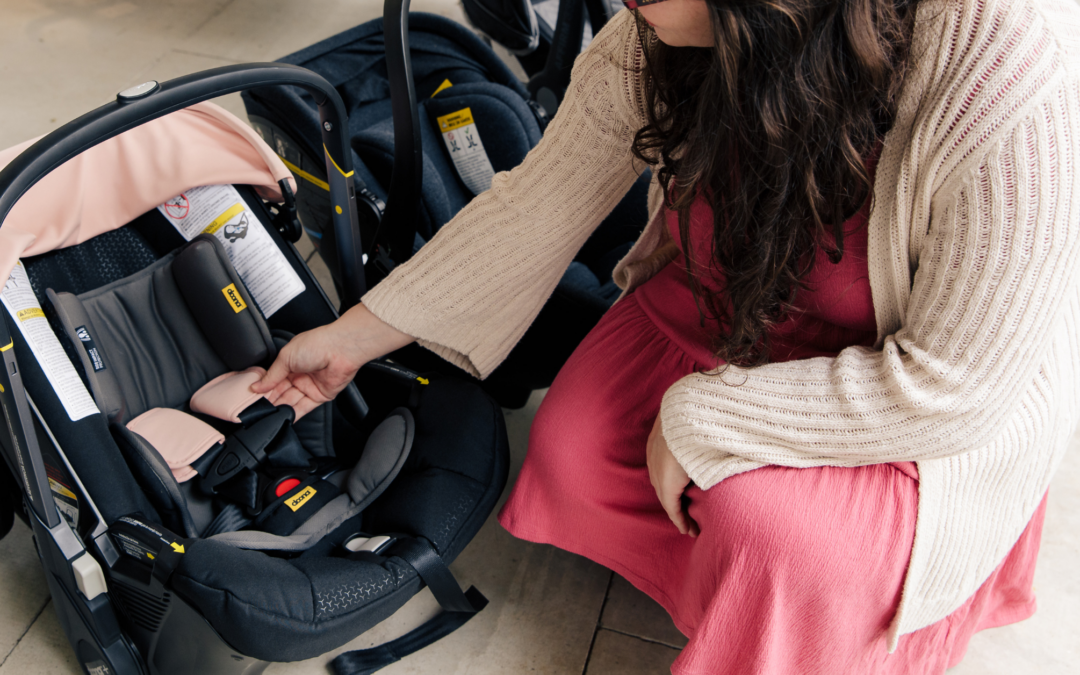When people say “newborn car seat,” they usually mean a car seat designed for babies weighing between 4-30 lbs. Infant car seats and certain convertible car seats are suitable for babies right out of the hospital.
All car seats have plenty of adjustment opportunities to suit different-sized bodies. There are adjustable harness straps, varying recline positions, multiple headrest heights, and removable padding.
The removable padding, often called the “infant insert” or “newborn insert,” can be a great tool for achieving the right fit on your tiny baby, but many parents are unsure when to remove it. So, today, we’re going to discuss how to use the infant insert and when to remove the infant insert!
Here’s what you need to do:
When To Take Out Newborn Insert From Car Seat
The newborn insert in your car seat can be an asset or a hindrance, depending on how you use it. Unfortunately, many car seat manuals aren’t clear about how to use the extra padding, which can make the process of using a newborn car seat stressful and confusing. You must know not only what the newborn insert is, but how to use it, and when to take it out!
What Is A Newborn Insert?
The purpose of the newborn insert is to position your infant safely in their car seat. It can also serve to increase your baby’s comfort in their car seat during those early months!
When To Take Out The Newborn Insert In Car Seat
When the owner’s manual says to.
First, you must check the car seat manual, determine when it’s safe to use, and when to remove the insert. The manufacturer’s directions are always your go-to when deciding how to handle your car seat and respond to various changes. Period! They’re the ones who’ve crashed-tested the seat and the newborn insert. However, sometimes manuals don’t specify important things having to do with your seat, like how to clean your car seat or when to remove that newborn padding! When that happens, it’s best to find trusted information from us at Safe in the Seat!
Before you even use the car seat.
Not all car seat inserts are required. If the seat doesn’t specify that the padding must be used, we recommend removing the head supports. Head supports can push your infant’s head forward in a chin-to-chest position and put them at risk of positional asphyxia.
Head supports are often seen as necessary to immobilize an infant’s head when riding, but this is not needed unless your child has a medical condition that requires stability. The normal jostling of a moving car shouldn’t be a concern for the average baby.
When the baby is no longer rear-facing.
Most car seats only permit the use of padding in rear-facing mode. When a car seat is front-facing, the padding should no longer be in use. However, we at Safe in the Seat, as well as the American Academy of Pediatrics and the National Highway Traffic Safety Administration, recommend that you rear-face as long as possible. So, if you’re going to keep your child rear-facing until they hit the max weight (up to 50 lbs) or height (up to 49 inches), they’ll outgrow the infant insert long before that!
When the baby is over a certain weight or height.
The car seat manual should specify when your child will outgrow the infant car seat padding. As soon as your baby hits the weight limits specified by the manual, remove the padding.
Are Aftermarket Inserts Safe?
No. All aftermarket products not created by the manufacturer are unsafe. If the insert did not come with your car seat and you can’t purchase it from the car seat manufacturer’s website, it hasn’t been crash tested, and therefore, it’s not safe. There is no need to add anything to your car seat when you take it out of the box. It’s perfect the way that it is!
What if My Baby is Small?
If your infant is very small (under 5 lbs) and potentially medically fragile, you may find it difficult to achieve a good fit in your infant car seat. It’s unlikely that the nurses doing your car seat test at the hospital will have the training to identify this and let you know. So, if you’re worried about the safety of your little one, book a car seat consultation with a Child Passenger Safety Technician (CPST) and maybe consider a different car seat for your preemie.
It’s important to remove the newborn insert at the right time!
Your baby’s first car ride home can be stressful, especially if it’s your first time using their car seat. However, as your baby rapidly grows, the struggle doesn’t stop. As parents, it’s crucial to regularly reassess our car seats to ensure they’re safe and comfortable for our child’s size. Over time, adjustments like harness straps, recline position, headrest height, and inserts are necessary as your child grows. So, keep up-to-date on your child’s size and the requirements specified in the manual.
There’s nothing more important than your child’s safety and their car seat is essential to keeping them out of danger. You can learn more about car seats, vehicle safety, and more on the Safe in the Seat blog!

